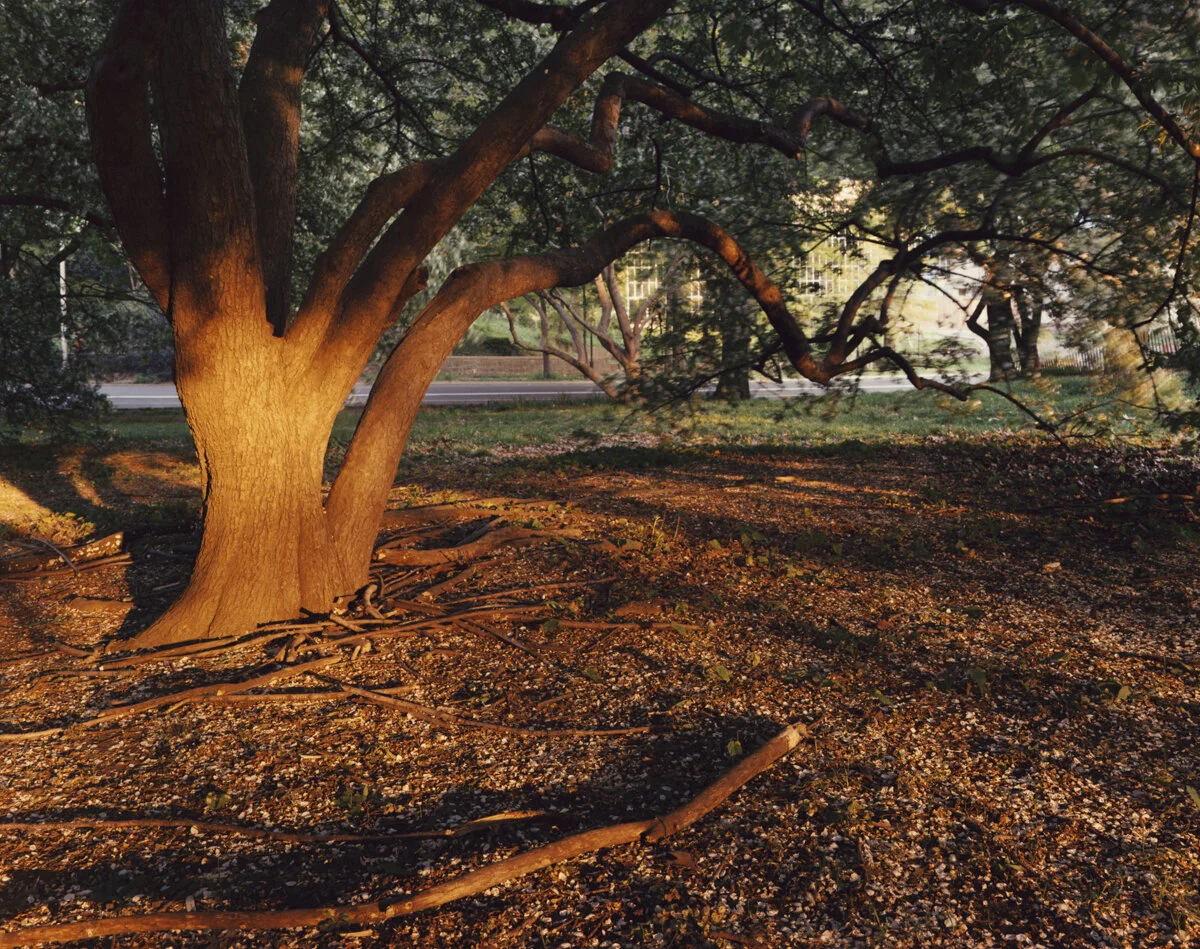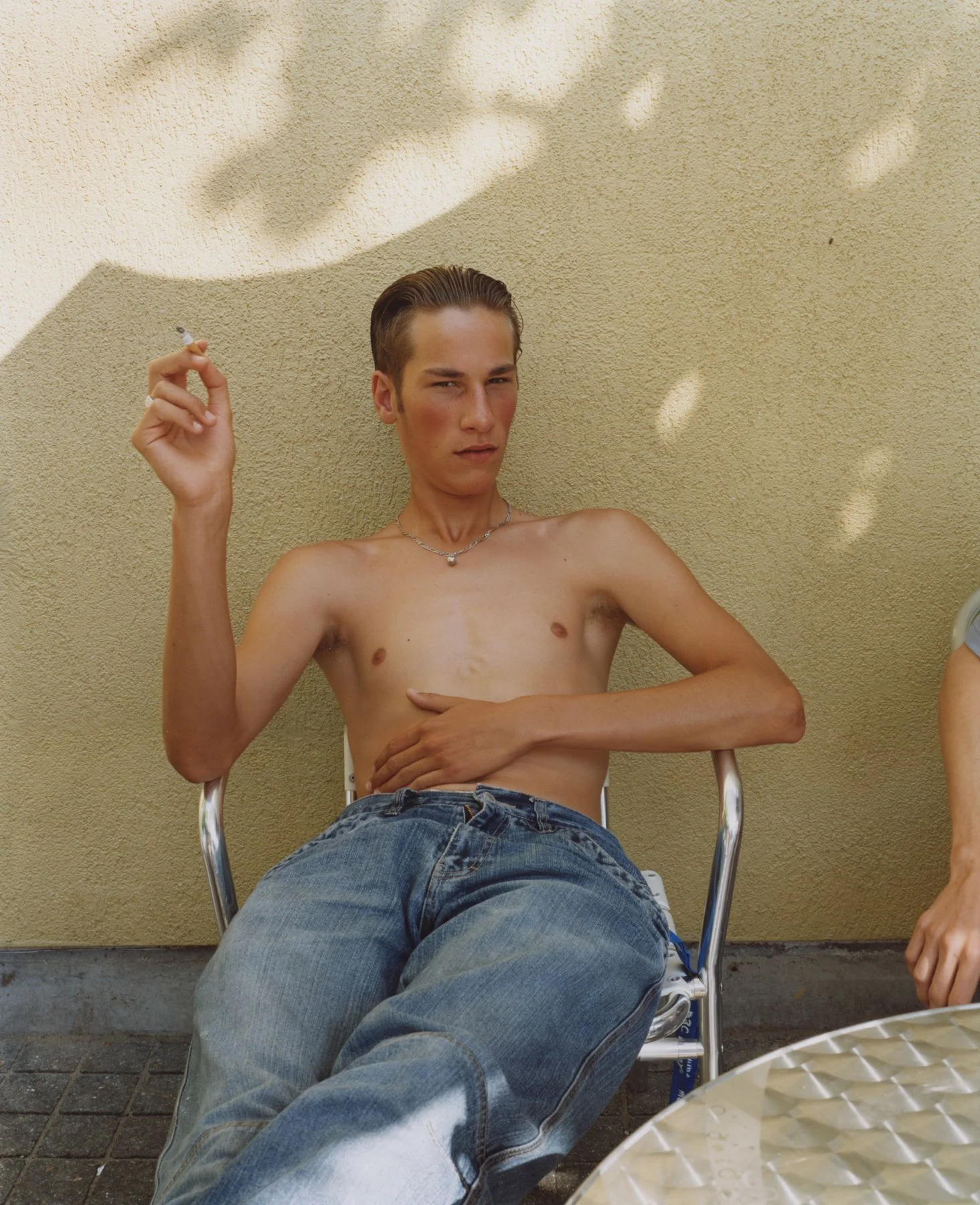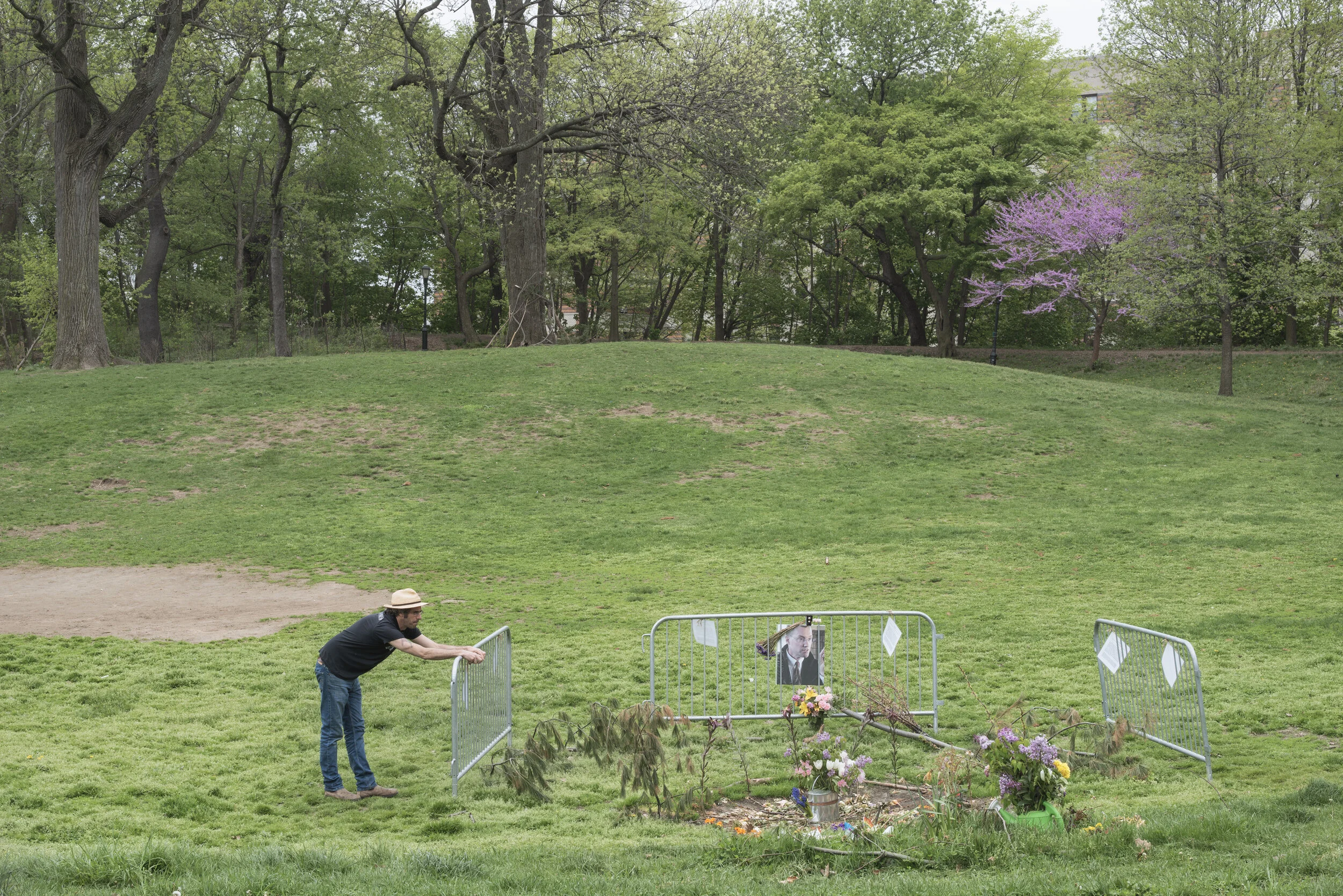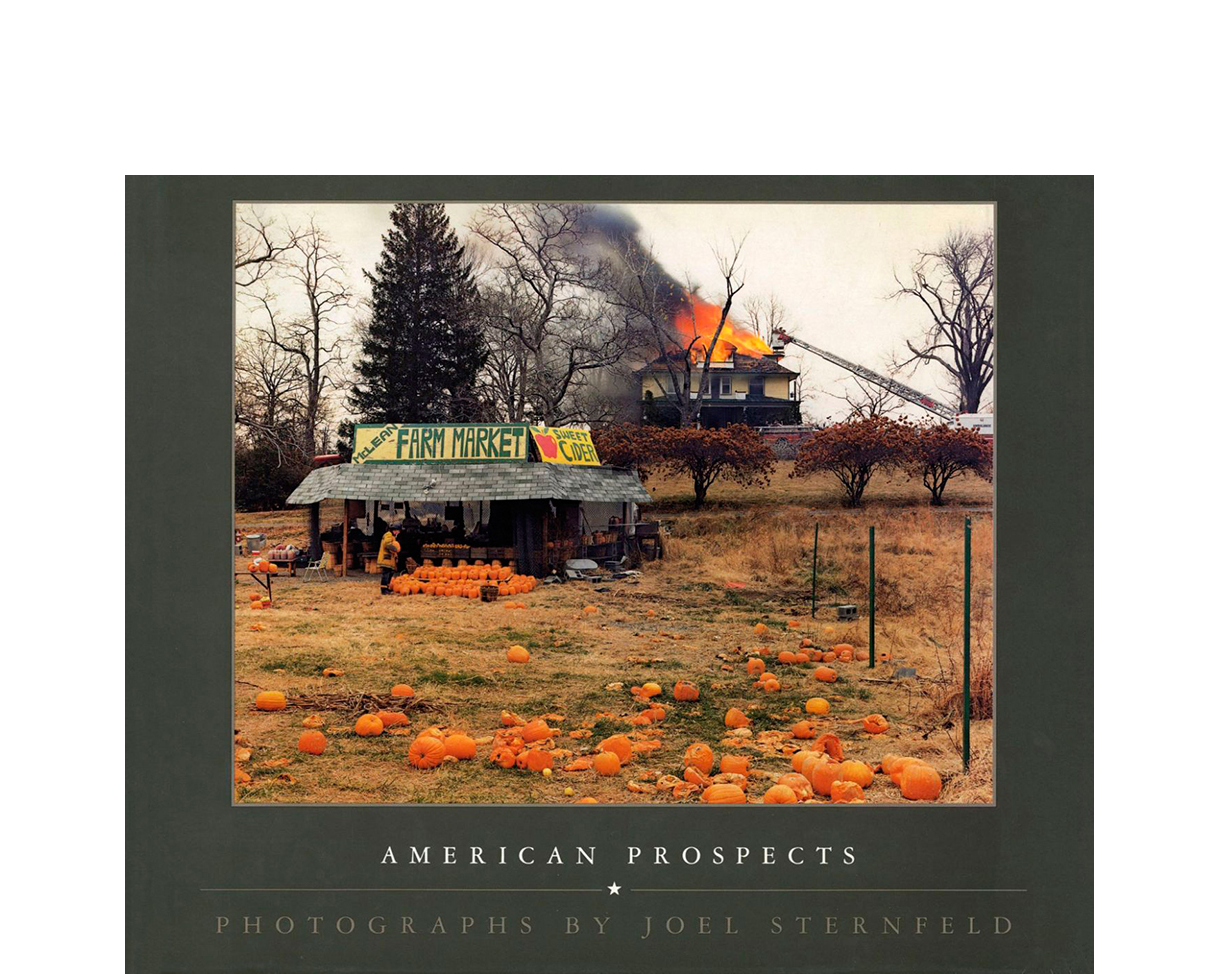Sweet Earth Afterword
Afterword
In the 1840s in New England, a “lost generation” of youths refused to follow their fathers down to the banks and cotton merchant houses of Boston. They grew their hair long, read Schiller and other German Romantics and went to the woods to play their flutes. They took vows of poverty and retreated to garrets to write poetry. Occasionally one of them would go to the wharves in Boston hoping to catch a ship to India to learn Sanskrit.
I first read of these North Country bohemians in Van Wyck Brook’s The Flowering of New England, an intellectual and literary history of the “ancien” region of the United States, to use Calvin Trillin's description. The parallels between the transcendental past and my 1960s present are striking.
Years later, while traveling and making the pictures that would become American Prospects, I went to Aroostook County, Maine, to photograph the potato harvest. In the back of my mind, I was hoping to pay a visit to Helen and Scott Nearing, whose book Living the Good Life was a bible to the 1960s back-to-the-land movement. After years of homesteading in Vermont, they now lived on the rocky coast of Maine. Scott was ninety-nine years old and out back chopping wood when I went up and knocked on the door. His handshake was firm. I showed him the pictures I had made and he didn't like them– he found them too critical. “Picture an ideal world and photograph that,” were his exact words.
Eleven years later I begin to take his advice. I was traveling and photographing for On This Site, a study of violence in America. At first I thought I would balance those dystopic pictures with photographs of truly utopian places. But while balance may work in dividing a chocolate bar between two children, it doesn't necessarily do so in art. I decided to keep On This Site a book about violence. Nevertheless I continued to make pictures of ideal communities. The process provided relief from documenting places stained by what had occurred there.
There was another reason I made these pictures then: the early 1990s were years marked by the collapse of the Soviet system. As the world seemed to turn in unison to hyper-capitalism and large scale urbanism, I wanted to point out that there were other models that might be considered.
Here are a bit of definition and perspective may be helpful. I was documenting communities of common purpose. Charles Fourier, Henri de Saint-Simon, Robert Owen and others whose ideas led to the founding of such communities in the 1820s and 1830s were known as “socialists,” simply because they had a theory of society– the word did not mean what it does today. Later on and they were referred to as “utopian socialists,” and that term has continued to be attached to them.
Karl Marx and Friedrich Engels were disdainful of the philosophy of “utopian socialists.” They felt that the idea of changing the world one small community at a time would simply not work. In fact they believed that this sort of experimentalism constituted a diversion from the true struggle summoned by their “scientific socialism.”
Yet the failure of the Soviet Union in no way implies the eventual failure of small, “human scale” experiments. In fact, a very clear distinction needs to be made between the communal ideal and Marxism. They both value collectivity, however, they are worlds apart in how they have valued it, and to what ends.
Nevertheless, even the cursory glance at this book reveals that many of the communities described were short-lived – perhaps there was some truth in Marx’s disdain.
I am not a utopian scholar: I've read some of the literature and I’ve obviously visited communities and spent thoughtful (and wonderful) times in them. How does one understand the fact that so many communities began with idealism and ended in ruin? Before offering a possible answer I would like to define things a bit more. It was in Europe that much of the important early utopian thought occurred, but it was in the fluid environment of young America that actual experiments could take place. Some scholars see waves of experimentation coinciding with long term periodic waves in the business cycle, but I think that the history of experimental communities may be simply divided into three periods.
The first occurred between roughly 1810 and 1860 when approximately six hundred communities were established. The early Industrial Revolution was taking hold in America and people were struggling to maintain control over their lives, which were being subsumed by the factory system. Religiosity was at a peak and so was utopianism. In the 1840s an estimated one hundred thousand Americans participated in Utopian experiments.
These were the first throes of communalism and of course many such experiments were destined to fail. The early communalists were inventing the wheel – they had no previous experiments to look to for instructive lessons. And they were dealing with a hostile environment. When the Rappites first went to southern Indiana they were devastated by the malaria. When the “exodusters” went to Kansas they started out living in hovels in the sod. That any of these communities were successful at all maybe that surprise– that some, like the Shakers, were hugely successful the miracle.
Although experimentation continued sporadically for the next hundred years, particularly in California, it was in the 1960s that the second wave occurred. All at once, communes sprouted everywhere, particularly in New England, Virginia, New Mexico, Oregon and yes, California. This period currently resides in that nether zone between historic past and present– and it is insufficiently studied and understood. Timothy Miller points out in The 60s Utopias: Hippies and Beyond that it was the initial success of a commune which often brought about its decay, because large numbers of outsiders were then attracted to it.
The present period, meaning the past fifteen years in which a hundred or so are so successful co-housing communities have been established and the number of “eco-villages” have begun, may prove to be the most important period of communal living of all. The new communities seem to be gleaning all of the lessons of the past and coming up with durable forms. These typically do not involve income-sharing or living under one roof, nevertheless they are very much communities of common purpose.
In thinking about the durability of communalism, it should be noted that every societal enterprise is marked by widespread “failure.” We don't do away with the institution of marriage or corporations simply because there are divorces and bankruptcies.
An old expression has it that “the seed never explains the flower.” I believe that these three periods of experimentalism in America, even the present one, are merely seeds. As the evidence of ecological ruin mounts, the world will come to value these communities and the storehouse of knowledge they have been quietly amassing about sustainability.
For America, that will be a complicated moment. Communitarianism represents one half of one of the deepest schemes in American self-identity, the one that lies between the competing mythologies of individualism and collectivism. Individualism gets good press–it is Horatio Alger or Karen Silkwood, or it’s Shane walking off into the heroic landscape of oneness. Individualism makes for easy casting, leading man or lady of the day– a bit of financing, it's a movie. But how do you cast team effort or community spirit? Nonetheless they are very much a part of the American ethos as well.
The communities pictured in this book represent just a few of the hundreds and thousands of communal experiments have taken place in America over the course of the past two centuries. None of these pictures does justice to its subject– tells and subject’s true story. That's part of the problematics of the photograph, or perhaps better said, the problematics of viewing photographs: our inclination to misread or over believe in grains of silver salt.
So here is an image: a tall, bone-thin man standing in the Canyon in the hills of northern Arizona. It is late on a March afternoon, and the last rays of the sun are going down. He is standing by a solar oven, next to a small trailer. This is Freedom-Universe, this trailer, this man and the surrounding forty acres of high Arizona scrub hillside still in winter beard but soon to be fragrant with sage and flowering prickly pear cactus. Not a single bird now, but in a month the mountain chickadees will own the valley. Kya spent years in a commune in California and searched for a year for this spot after the group disbanded. It is a south-facing bowl with good water, the sort of topography an early man might have wandered into and thought a good place for his tribe. And that is what Kya thinks it: in the Communities Directory he writes, “The community is being built on a foundation of interpersonal relationships based on shared values such as Conviviality, Social Tolerance, Equality, Honesty and Non-Violence.” And to be sure, Kya is one of the most likable people I've met in my travels in the community of communities where I have met nothing but likable people. He radiates a simple goodness as we climb the hills in search of sunlight for a photograph that never gets made. Over the next several months my promised to return goes unfulfilled.
In a way I'm glad that picture was never made–it could not have conveyed all the hopes he has for community of truly free, convivial equals. So this, more than any other, the image I carry out of my attempt to picture an ideal world, as per instructions given to me at Scott Nearing’s kitchen table a quarter of a century ago: a single man down sixteen miles of the roughest terrain that can still be termed a road, standing up for what he believes is the highest use of our time here and the proper use of this good green earth we were given, and inviting others to come and join him.













































